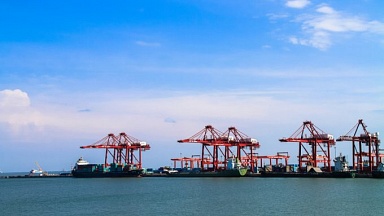Overland transport links between the European Union (EU) and China were almost nonexistent before 2011. Railway lines existed, notably the century-old TransSiberian Railway, but overland freight traffic from East Asia to Western Europe was minuscule. The paper documents the development of overland rail transport links between the EU and East Asia and analyzes the consequences of the increased connectivity.
The central argument is that the catalyst for rail services between Europe and China was demands from automobile and electronics companies coordinating their Eurasian value chains, for which air freight was too expensive and sea freight too long with imprecise arrival dates. Private sector agents responded by offering a variety of additional services which made rail freight attractive to more customers. The success of the rail Landbridge also depends upon collaboration of governments and national rail companies to facilitate transit by improving the soft infrastructure (e. g. minimizing border delays and bureaucratic requirements).
The process was largely market-driven. However, after the announcement of China’s Silk Road Economic Belt in September 2013 and its incorporation into the Belt and Road Initiative (BRI) launched in May 2017, the Landbridge became consistent with the centrepiece of China’s foreign economic policy. Policy statements of the EU Commission such as the 2016 Global Strategy and the 2018 Joint Communication on Connecting Europe and Asia also started to give greater prominence to connectivity to China.
Although rail freight will never match the quantity of sea freight or the speed of air freight, it has greater implications for sustainable connectivity. The nature of rail operations, compared to stacking a ship with twenty thousand containers, involves greater need for coordination, especially when shipments are links in international value chains whose success relines on just-in-time delivery of components at every stage of production, and more intimate connectivity. Electric trains along well-maintained track are also a more environmentally friendly mode of international transport than ships or planes.
Find more details in the report attached.




